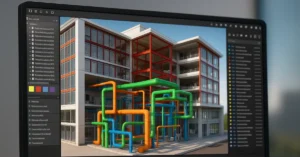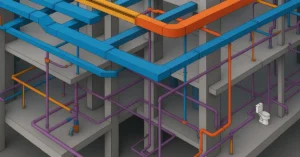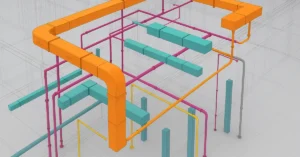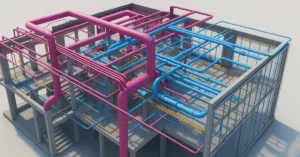Explore the most unforgettable brutalist buildings in Seoul that redefine concrete elegance and architectural innovation
Brutalist buildings in Seoul are stirring a quiet architectural revolution. Amidst the city’s dazzling skyline of glass towers and traditional palaces, these stark, concrete monoliths stand out for their raw honesty and unapologetic geometry. Often misunderstood and even criticized, brutalist architecture in Seoul has begun gaining recognition for its cultural relevance, artistic merit, and the unique narrative it weaves between past and future.
Seoul, a city known for its rapid modernization and innovation, has found a surprising yet striking companion in the Brutalist movement. Once relegated to the margins of taste and dismissed as relics of post-war pragmatism, these structures now intrigue a new generation of architects, artists, and urban explorers. This blog takes a deep dive into the bold world of Seoul’s brutalist architecture, spotlighting key buildings, their historical context, and their evolving role in the urban landscape.
Understanding Brutalism in the South Korean Context
Brutalism, born in post-World War II Europe, found its way to South Korea during the 1960s and 70s—a time of economic reconstruction and urban expansion. The style, defined by its exposed concrete surfaces, blocky geometries, and functional design, resonated with the national sentiment of rebuilding and redefining identity.
For Seoul, brutalism was not just an architectural import but a functional necessity. The demand for public institutions, educational facilities, and housing meant that structures had to be economical, durable, and efficient. Brutalism answered this call with prefabricated concrete modules and minimal decoration. Yet in Seoul, this style evolved with a uniquely Korean twist—often integrating traditional spatial layouts, cultural symbolism, and contextual responsiveness.
Top Brutalist Buildings in Seoul
1. Ewha Womans University Campus Complex (ECC)
Location: Seodaemun-gu, Seoul
Architect: Dominique Perrault Architecture
Year Completed: 2008
Though technically not from the mid-century brutalist era, the ECC is often categorized under neo-brutalism due to its exposed concrete structure, minimal material palette, and striking subterranean integration. The building’s design cuts into a hill, forming a corridor-like space between concrete retaining walls. It reimagines brutalist principles with a futuristic elegance and has become one of Seoul’s most iconic modern academic structures.
2. Arario Museum in Space
Location: Jongno-gu, Seoul
Architect: Kim Swoo Geun
Year Completed: 1971
Originally the Space Group Building, this remarkable structure was designed by one of Korea’s most influential architects. The building showcases exposed concrete, a complex circulation system, and void-filled volumes that offer a dialogue between Korean aesthetics and brutalist function. Today, it houses the Arario Museum, retaining its architectural essence while serving a new cultural role.
3. Seoul Metropolitan Library (Former City Hall)
Location: Jung-gu, Seoul
Architect: Kim Jung-up
Year Completed: 1983 (Original), Renovated in 2012
This imposing structure near Deoksugung Palace exhibits the bold massing and rigid lines typical of brutalism. The building once served as the city hall before the new glass structure was built. Today, as the Seoul Metropolitan Library, it maintains its brutalist core while engaging with contemporary civic needs.
4. Sewoon Sangga Complex
Location: Jongno-gu, Seoul
Year Completed: 1968
An early attempt at a megastructure, the Sewoon Sangga was envisioned as a linear city integrating residential, commercial, and technological zones. Its heavy use of concrete, modular repetition, and infrastructural ambition classify it as one of the first brutalist projects in Korea. Though partially redeveloped, parts of it still retain their raw concrete character.
5. Korea Institute of Science and Technology (KIST)
Location: Seongbuk-gu, Seoul
Year Completed: 1966
Built during a pivotal moment in Korea’s technological rise, KIST features functional concrete buildings arranged in a campus-like setting. Its utilitarian look and efficient layout reflect the ideals of brutalism—where function dictated form. Although some buildings have been modernized, many still display original materials and forms.
6. Baekbeom Square Memorial Hall
Location: Yongsan-gu, Seoul
Year Completed: 1990
Dedicated to Korean independence leader Kim Ku, this memorial hall is a solemn, concrete structure that balances monumentality with minimalism. The texture of its raw concrete walls and geometrical purity pay homage to brutalist design. It invites quiet reflection and carries deep historical significance.
7. National Theater of Korea (Interior Design Elements)
Location: Jung-gu, Seoul
Year Completed: 1973
While not entirely brutalist on the outside, the National Theater includes several brutalist interior design elements such as concrete ceilings, sharp angular corridors, and raw textures. These elements provide a sensory architectural experience that reflects the ethos of brutalism.
8. Hannam-Dong Apartments (Various)
Location: Yongsan-gu, Seoul
Year Built: 1970s–1980s
Several apartment blocks in the upscale Hannam-dong area were constructed using brutalist principles—strong, repetitive geometric patterns, exposed stairwells, and unornamented surfaces. Many of these buildings are now at risk of demolition due to redevelopment plans.
Public Reception and Cultural Dialogue
In Seoul, brutalist architecture sparks mixed emotions. Older generations often associate these structures with post-war austerity and a lack of warmth. Conversely, younger audiences, influenced by global architectural trends and digital storytelling, have started to celebrate the brutalist aesthetic as authentic and bold.
Brutalist buildings have increasingly become backdrops for fashion shoots, indie films, and architectural tours. Instagram accounts and local blogs highlight their sculptural qualities and historical intrigue. The growing nostalgia and appreciation have prompted debates about heritage conservation and urban identity.
Conservation vs. Development
South Korea’s rapid urban redevelopment often comes at the expense of preserving older buildings, including brutalist ones. Seoul’s property market, driven by high demand, tends to favor new high-rises over the restoration of aging concrete blocks.
However, change is slowly happening. Architecture schools, preservationists, and civic groups are pushing for the protection of significant brutalist landmarks. Adaptive reuse has become a key strategy—transforming former industrial or civic buildings into galleries, cafés, or cultural spaces while preserving their brutalist core.
Brutalism in Korean Pop Culture and Design
Brutalist aesthetics have seeped into Korean pop culture, especially in film and fashion. K-dramas and music videos occasionally use these concrete backdrops to suggest dystopian moods or to emphasize the human scale against imposing geometry. Korean fashion brands have adopted the raw minimalism associated with brutalism in their retail spaces and campaign visuals.
Designers and artists often look to brutalism for inspiration in texture, light play, and material honesty. This cultural resonance reinforces the relevance of Seoul’s brutalist buildings beyond architecture, embedding them into the city’s broader creative identity.
Brutalism in Education and Contemporary Architecture
Several universities in Seoul, including Hongik University and Korea University, offer modules or workshops focused on brutalist architecture. Students study both the technical and cultural dimensions of this polarizing style.
Contemporary Korean architects have also adopted neo-brutalist themes. The use of exposed concrete, industrial materials, and elemental forms can be found in many new buildings across Seoul. These reinterpretations demonstrate how the brutalist language is being translated into a modern context—resonating with minimalism, sustainability, and structural clarity.
Conclusion
Brutalist buildings in Seoul are more than concrete behemoths; they are physical narratives of a city balancing tradition, transformation, and identity. While often criticized for their severity, these structures represent a crucial phase in Korea’s architectural and cultural evolution.
As Seoul continues to modernize, the question isn’t whether brutalist buildings belong—but how they can coexist with the city’s future. Through conservation, creative reuse, and public engagement, brutalism in Seoul stands a chance to be not just remembered, but reimagined.
Whether you’re a traveler, a design enthusiast, or a Seoulite with a curious eye, the city’s brutalist gems offer a raw, compelling lens into Korea’s past, present, and architectural ambition.
If you’re interested in learning more about architecture firms in Europe, check out this comprehensive list of the top 50 firms compiled by Archgyan. From innovative startups to long-established industry leaders, this list has it all. Take a look and discover some of the most inspiring and influential architecture firms in Europe today.
If you’re interested in architecture and want to learn more about this amazing field, subscribe to our podcast on youtube
For more SketchUp tutorials, head to https://www.sketchupguru.com










